Freezing herbs is a great way to preserve them. Come and learn how to freeze fresh herbs so you can readily use them in your favorite recipes anytime.
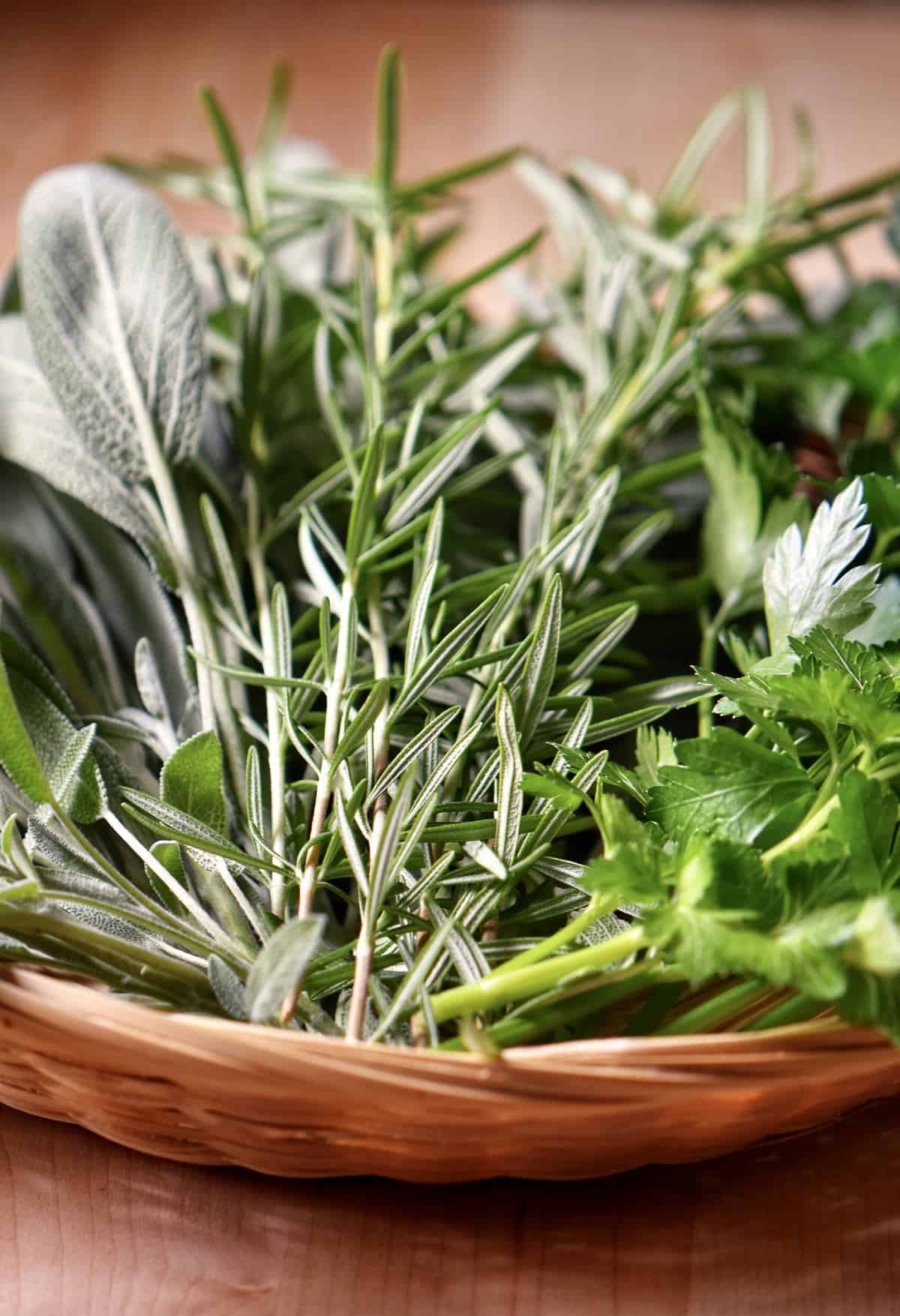
I love using fresh herbs to add flavor, aroma, and vibrant color to many dishes without adding extra calories or salt.
Unfortunately, they can quickly lose their sought-after qualities even if adequately refrigerated.
I have found a simple solution—freeze them! Freezing herbs is one of the most effortless ways to preserve fresh herbs.
It doesn’t take up much freezer space, is easy to do, and helps you save money in the long run. It also reduces food waste and trips to the grocery store.
You can freeze fresh herbs individually, like freezing parsley or combinations of your favorite herbs.
Today, I’ll focus on freezing a combination of rosemary, sage, and parsley—one of my favorite herb mixes.
You can freeze freshly chopped herbs in ice cube trays, airtight containers, or a Ziploc bag. Use frozen cubes of rosemary, sage, and parsley in soups, stews, or oven-roasted potatoes year-round – replace the fresh herbs in your recipe as needed!
Whether you grow herbs in your backyard garden or buy them fresh from a farmer’s market or grocery store, look at how to freeze fresh herbs so that you always have this delicious ingredient.
Jump to:
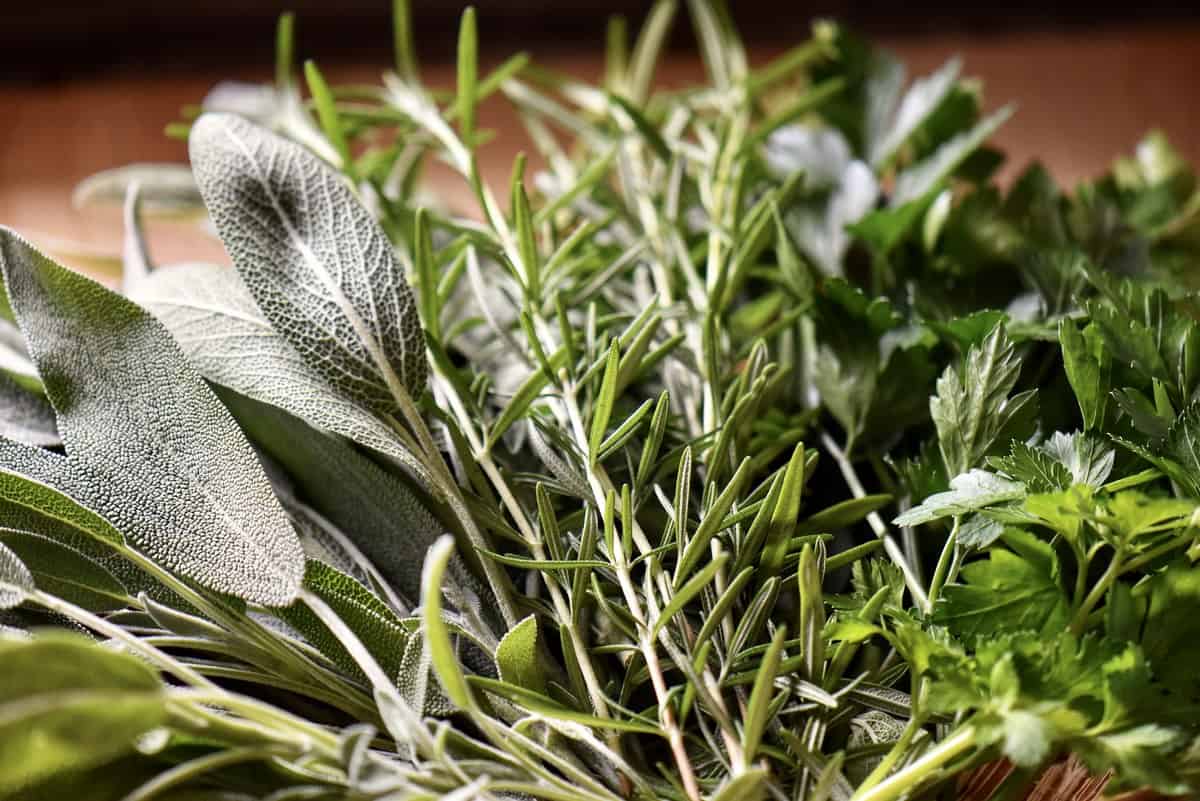
Harvesting and Shopping Tips
Growing herbs and/or planting an herb garden is easier than you think! Whether grown in a backyard garden or pots on your patio, most plants grow prolifically to provide delicious flavors all season.
To get the most from your herbs and preserve your summer’s bounty, harvest them anytime during the season when they are at their peak flavor and aroma but before they flower. It is important to pick your herbs early in the day after plants have dried off but before hot weather sets in. [source]
When purchasing at the grocery store or produce market, look for herbs with vibrant green leaves and healthy-looking stalks. Avoid any bunches with yellowing or limp stems, as they’re most likely going bad.
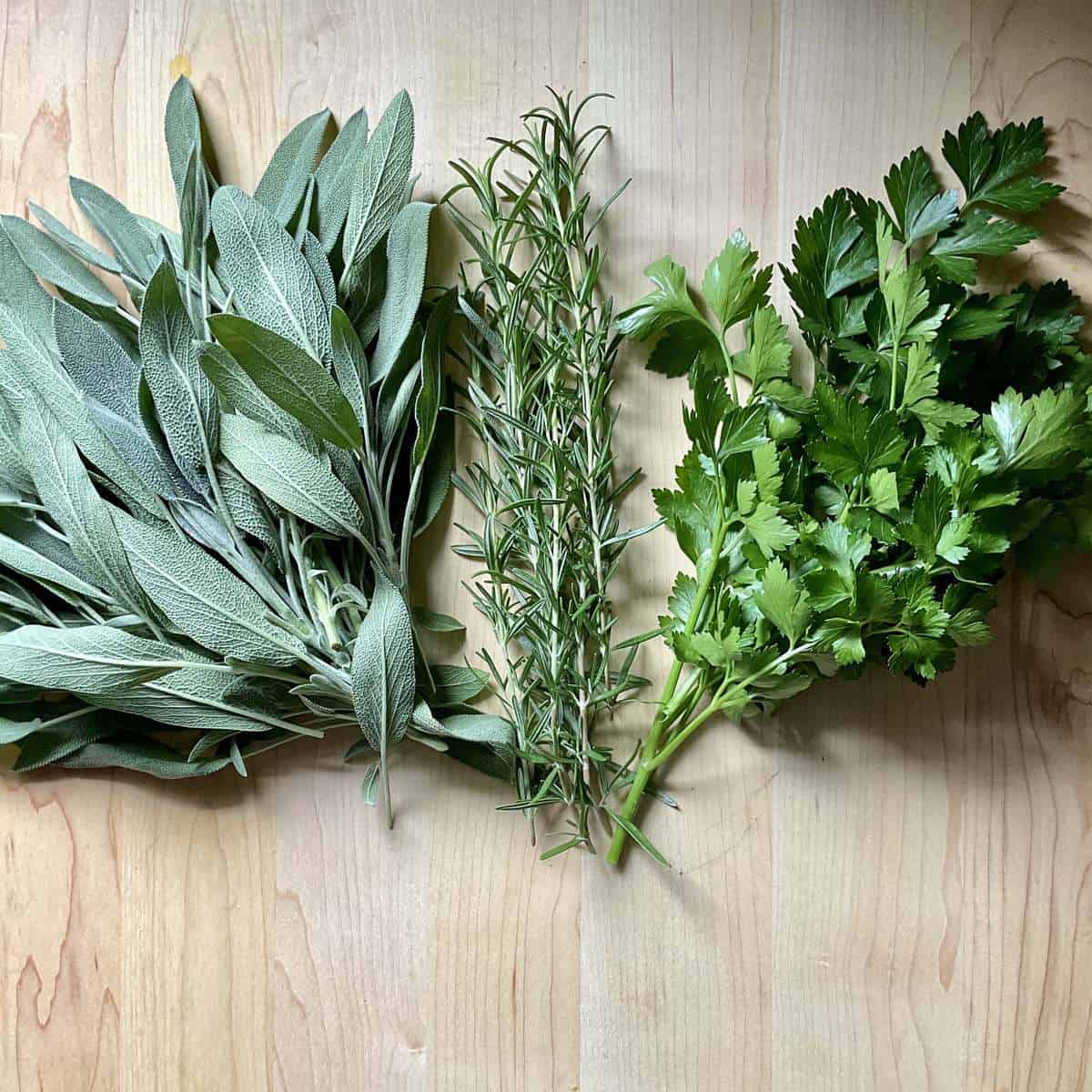
Which herbs freeze best
Herbs are the perfect way to add fresh flavor and aroma to your cooking. Frozen, they can be used just like fresh ones!
Many different kinds of herbs can be frozen, including cilantro, chives, dill, lemon balm, mint, parsley, rosemary, sage, and tarragon.
Experiment with various herbs and combinations until you find one that suits you best. Change the amounts if necessary; if that doesn’t work, try another type of herb.
My favorite herb combinations to freeze are parsley, rosemary, and sage.
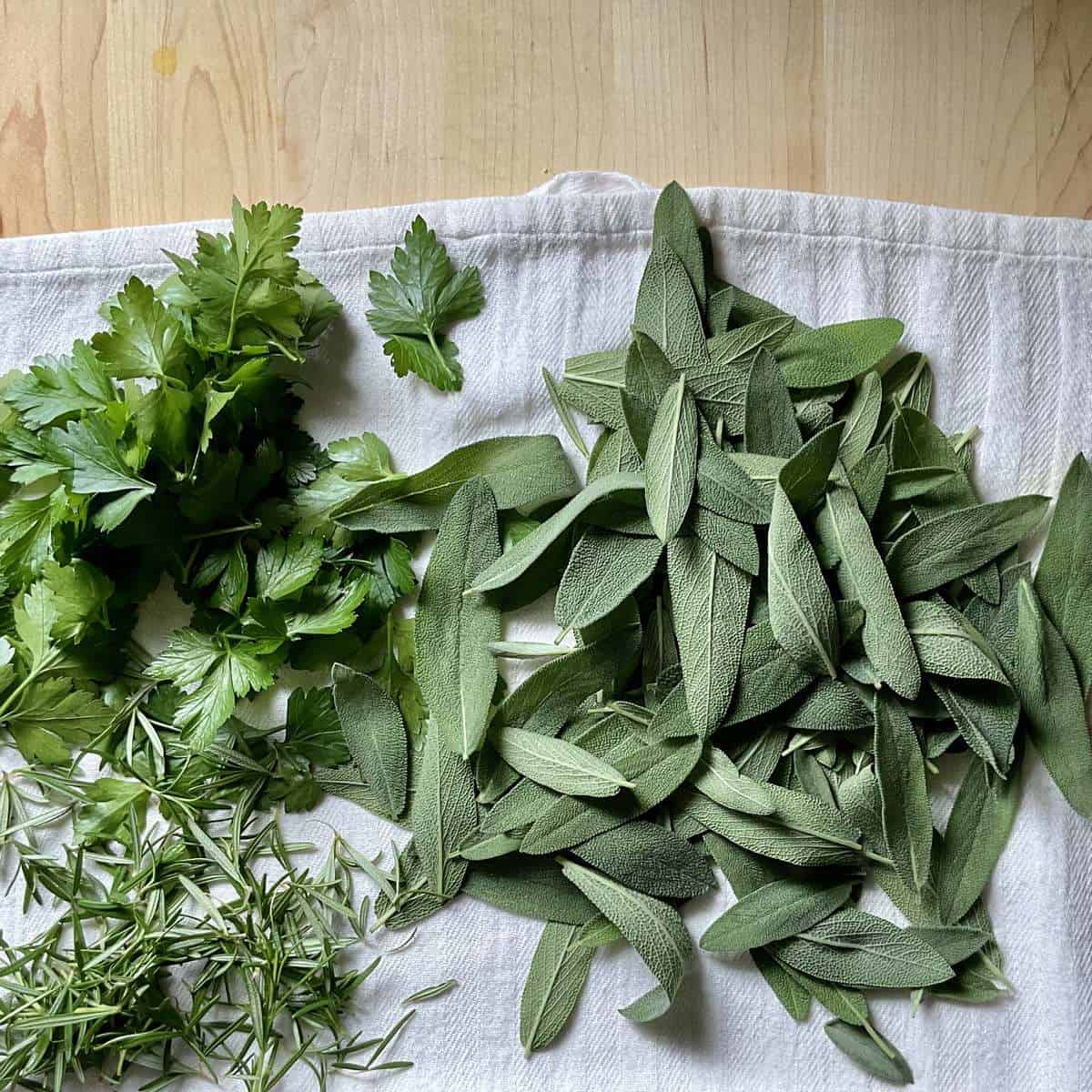
Let’s prep our herbs for freezing
To retain the most flavor out of your fresh herbs, let’s prepare them correctly.
Here are the simple steps:
- Soak the herbs in a large bowl of water, and swish them around. This will dislodge dirt, debris, or even insects -especially if picked from your backyard. You can soak with or without stems attached.
- It is important to get the leaves as dry as possible to prevent freezer burn and the formation of ice crystals. To do this, you can either spin or pat dry your leaves with paper towels or a tea towel for those without a salad spinner.
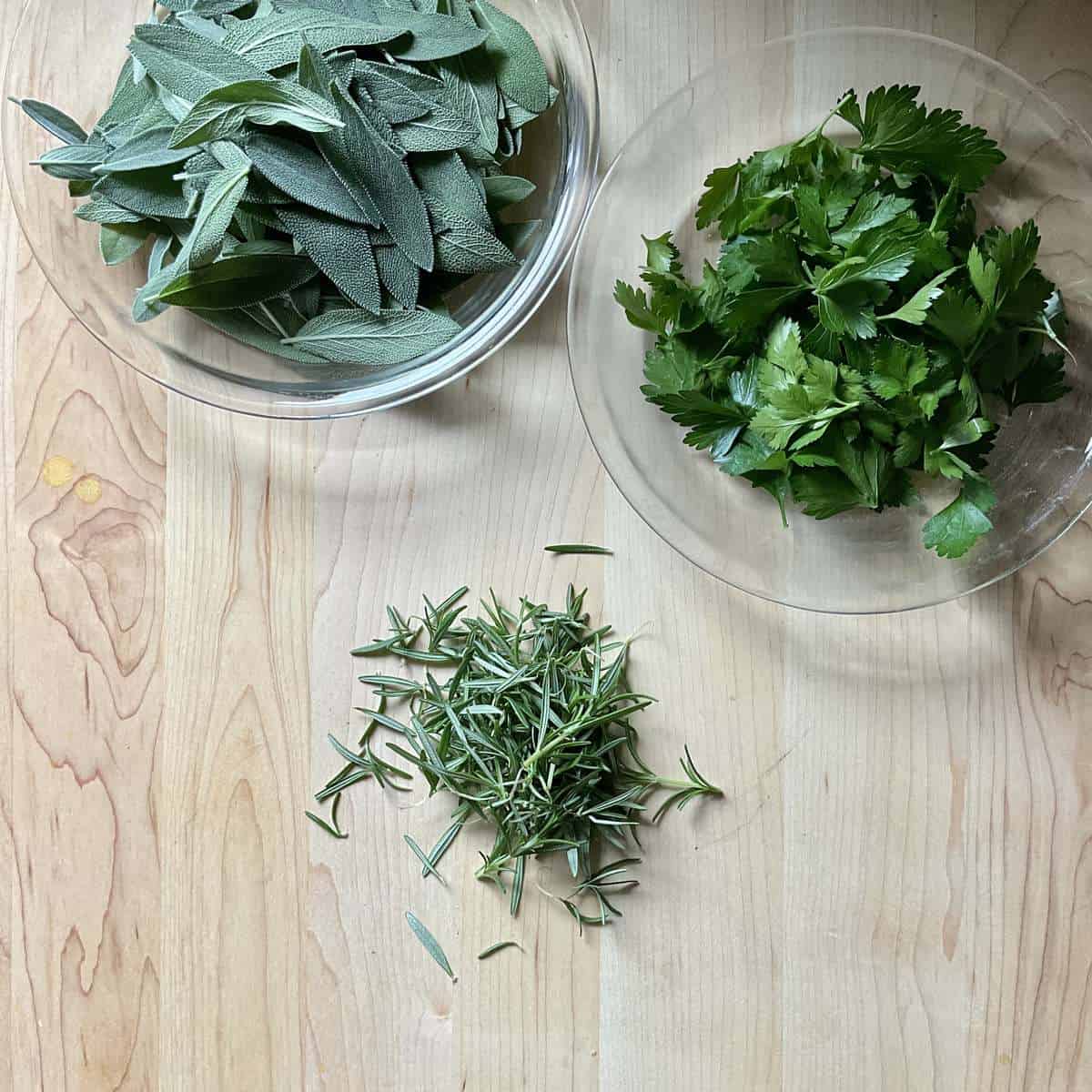
How to prep sage leaves: Sage leaves are large and bulky, so pinching them from the stem is much easier than with smaller plants or herbs. It’s also worth including some of these stalks when making your homemade broth for extra flavor!
How to remove rosemary leaves from the stem: Hold the top part of the rosemary stem with one hand. On the other hand, pull down the individual leaves until the stem is bare. You can use the rosemary stalk to flavor a homemade broth or white bean soup!
How to prep parsley leaves: Pinching the leaves from their stems is a delicate process that takes a little time but avoids bruising them, producing great results.
Learn more about How to Freeze Parsley
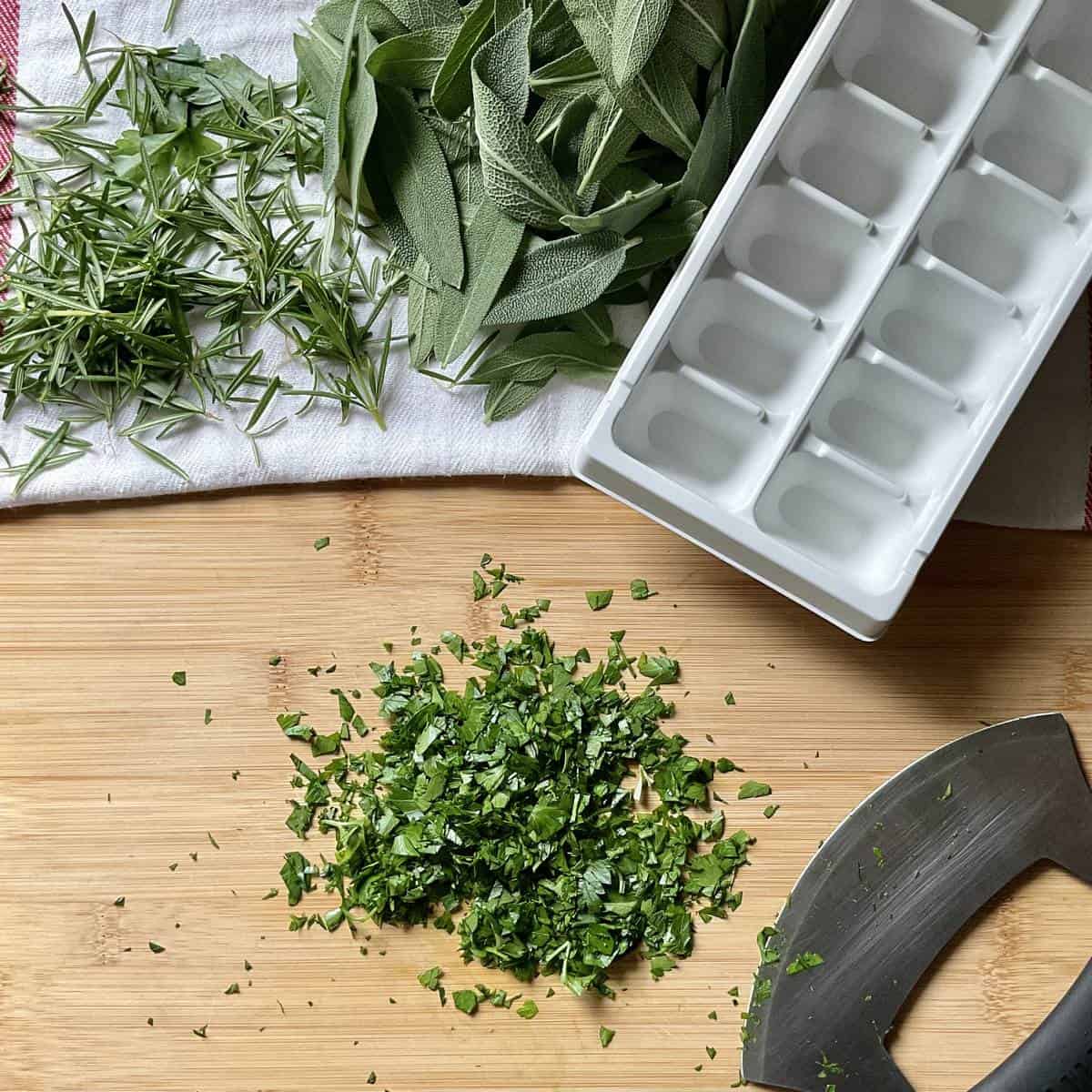
Chopping and mincing
To prepare your herbs for freezing, you can leave them whole or chop them down to the desired size.
To chop: Place the dry fresh herbs on a cutting board. Gather them in an even smaller pile and hold them down nicely with one hand while using your other hand to slice thin with as little effort as possible! Turn leaves 90 degrees, then cut again if needed until you have perfectly uniform pieces of whatever herb you are preparing to freeze.
To mince: Keep chopping your herbs, this time holding the handle with one hand and applying pressure to its tip. This will pivot the knife, allowing you to cut and mince the parsley as finely as you like. You can also use a food processor for mincing if you like – just a few pulses until it’s as fine or chunky as desired!
Another easy option is to use a mezzaluna to chop and mince your herbs down to size.
How to freeze herbs in multiple ways
If you love cooking but hate throwing away your overflow of fresh herbs, freezing is the perfect solution for long-term storage. Luckily, several ways exist to effectively freeze and preserve your favorite kitchen ingredients!
Freezing chopped herbs on their own
Now that you have the herbs chopped down to your preferred size, it’s time to freeze them so they’ll be ready when you need them.
Place loosely into a freezer-safe bag or airtight container. Label, date and freeze your bag. Use as needed. If you are making different herb mixtures, it’s a good idea to label each bag with the herb variety it contains.
Another option is to create a solid block by rolling whole leaves into a long log that can then be sliced with a sharp knife. This is a great method for fresh sage leaves.
To do so, firmly pack the herbs in a gallon-size Ziploc freezer bag. Without sealing the bag, lay it flat on your counter and start rolling from the bottom up while pushing out the air. When you reach the top, seal your bag. Be sure to label and date your bag before freezing.
When you are ready to use your frozen herbs, there is no need to thaw them. Remove the amount you need and quickly replace the container or log back into the freezer.
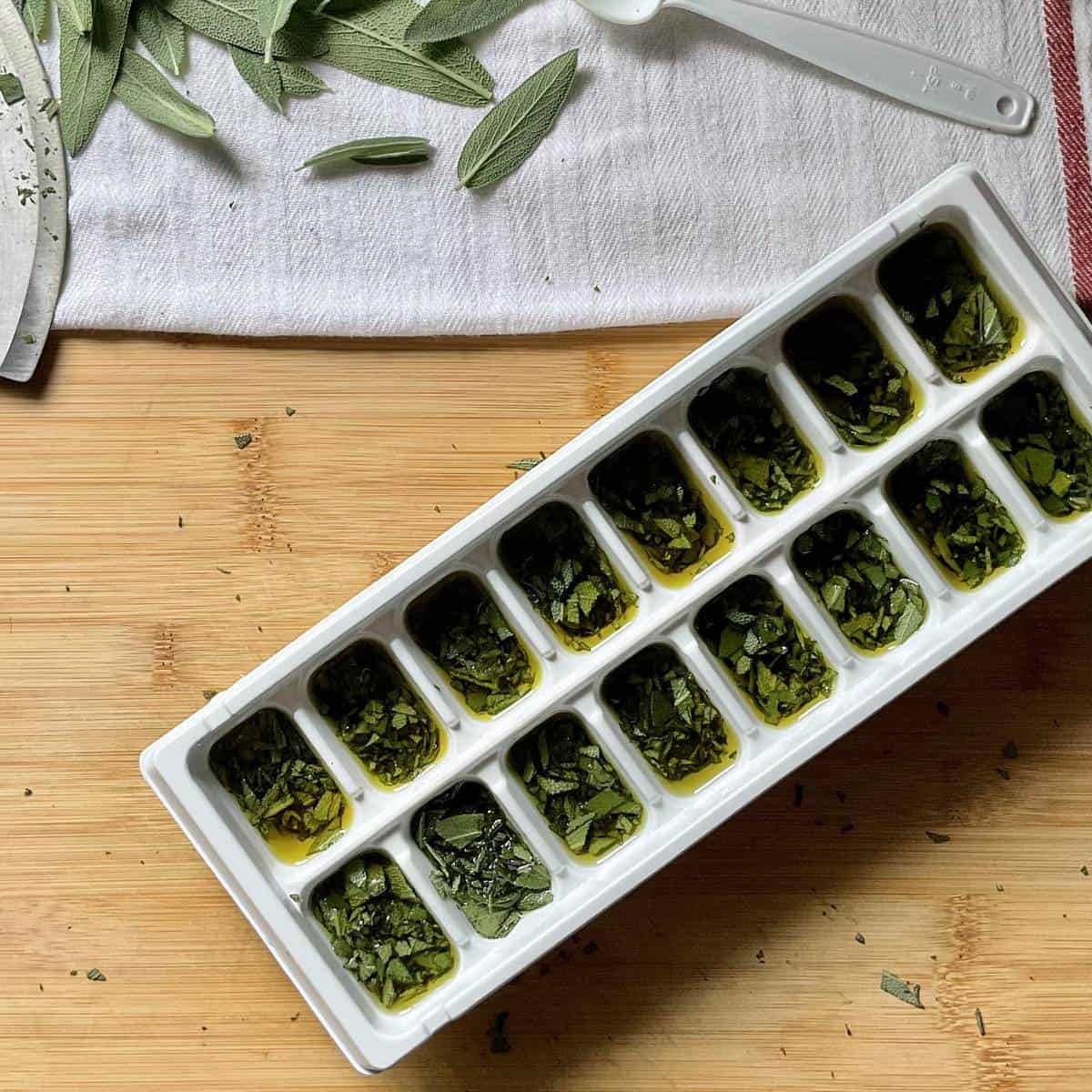
Freezing herbs in ice cube trays
The most convenient and best way to freeze herbs is using a standard ice cube tray. This preservation method creates frozen herb ice cubes perfect for cooking with and adding soups, stews, sauces, and more! Adding water or oil is the most common way to create these frozen herb cubes. However, you can also make them without any liquid at all!
Follow these steps for this convenient freezing option.
- Mince the bunch of fresh herbs.
- Measure 1½ tablespoons of minced herbs into each section of an ice cube tray.
- As an option, cover the herbs with 1½ tablespoons of cold water or olive oil. Neutral vegetable oil can also be used.
- Place the tray in your freezer until the cubes are frozen solid.
- Pop out the water or oil cubes, transfer them to a Ziploc plastic freezer bag, and seal them.
- Store them in the freezer until you need them.
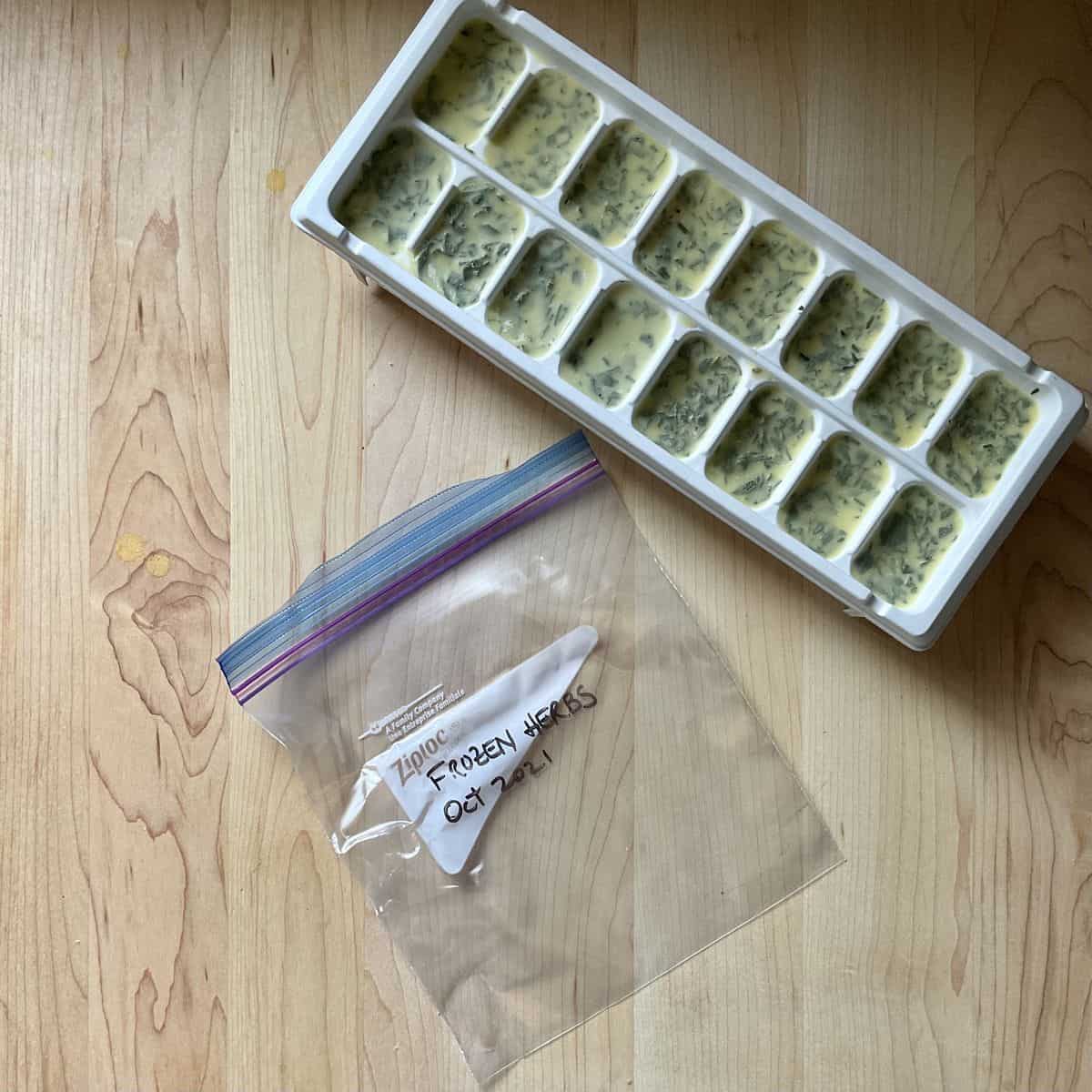
FAQ
If you can’t immediately freeze your herbs, make a fresh cut on the bottom of the stems or stalks. Gently wrap the herbs in a damp paper towel and slide the bundle into an open bag or container to prevent excessive moisture buildup. Store them in your refrigerator. You can also place the herbs in a container of water, cover the leaves with a plastic bag, and refrigerate them.
When stored properly, fresh herbs can last 2 to 7 days in the refrigerator.
Frozen herbs can last up to 6 months when properly stored and without fluctuating temperatures. However, the longer it stays in the freezer, the greater the possibility of experiencing freezer burn. Furthermore, herbs may lose their flavor over time.
The best way to use frozen herbs is to add them directly to dishes while they are cooking, preferably towards the end of cooking. This will help to preserve their flavor and prevent them from becoming overcooked.
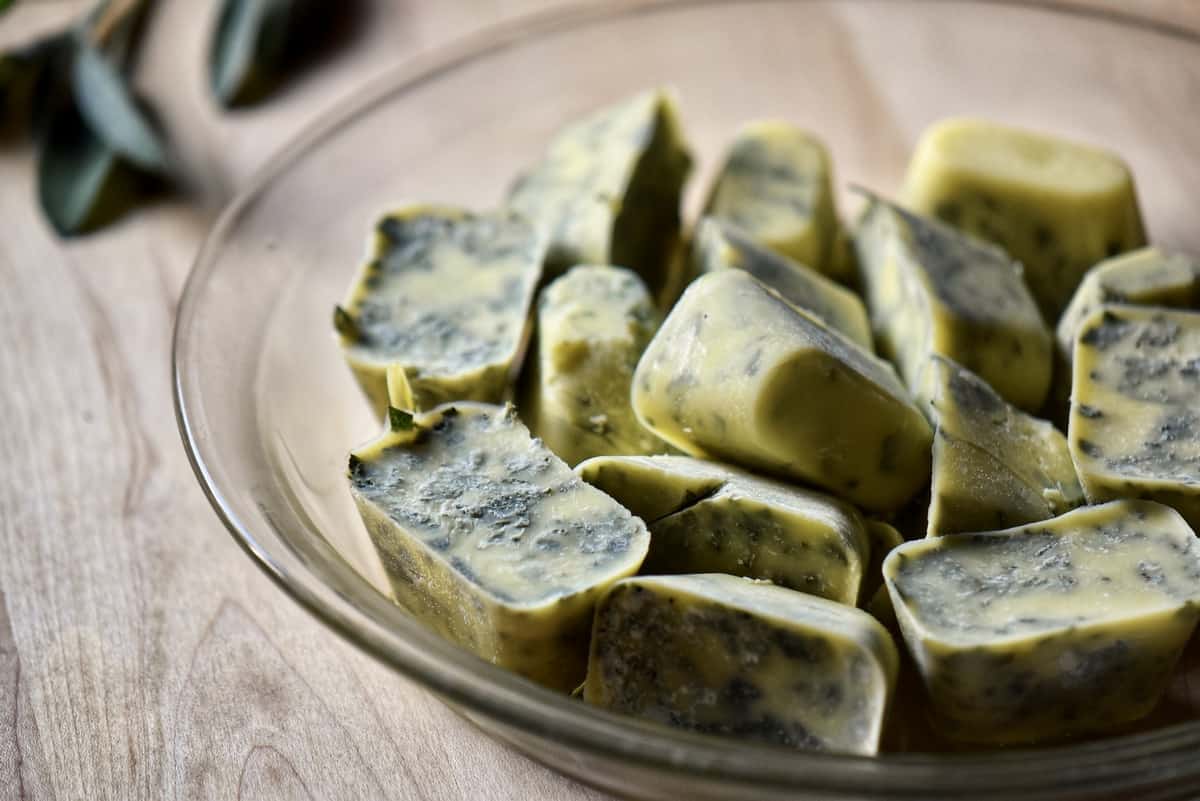
Recipes to substitute for fresh
When you don’t have fresh herbs on hand, there are plenty of recipes where frozen can be excellent substitutes. Here are some suggestions:
- Soups and Stews: Frozen herb cubes can be easily added to simmering soups and stews. They release their flavors gradually, enhancing the taste without needing fresh herbs. One of my favorites is my family recipe fot Escarole and White Bean Soup.
- Roasted Vegetables: Toss frozen herbs with olive oil and your favorite vegetables before roasting. This infuses the veggies with delightful herb flavors. One of my favorites is this Roasted Potatoes and Carrots Recipe.
- Egg Dishes: Enhance omelets, frittatas, or scrambled eggs with a handful of frozen herbs. One of my favorites is this Italian Potato Frittata Recipe.
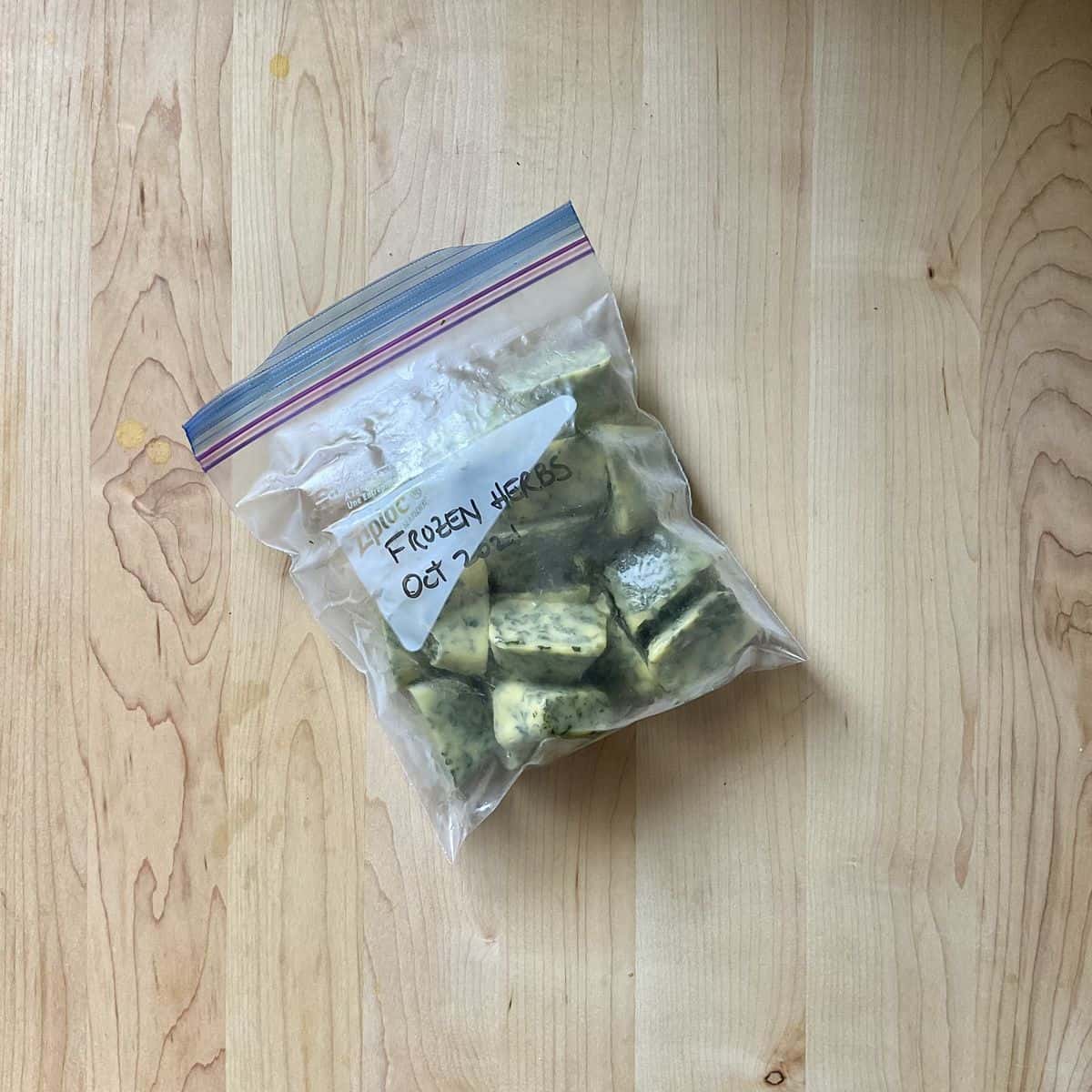
More food preservation
Food preservation and proper storage are key to preventing food from going bad. Many methods of food preservation exist, such as canning, freezing, pickling and drying. If you want to learn more, check out these other step-by-step guides.
Summary
Do you have any fresh herbs that you need to use up? If so, then consider freezing them! Freezing herbs is a great way to preserve their flavor and make them last longer. Plus, it’s really easy to do! Just follow these simple steps and you’ll be freezing fresh herbs like a pro in no time.
THANKS SO MUCH for following and being part of the She Loves Biscotti community, where you will find Simple & Tasty Family-Friendly Recipes with an Italian Twist.
Ciao for now,
Maria
We are a participant in the Amazon Services LLC Associates Program, an affiliate advertising program designed to provide a means for us to earn fees by linking to Amazon.com and affiliated sites.
You can find the mezzaluna I am using in the recipe video in my Amazon store. If you are interested, head to my Amazon store for all the details.
★★★★★ Are you planning on freezing herbs? I would love to hear about it in the comments below and be sure to rate these different methods!
Recipe
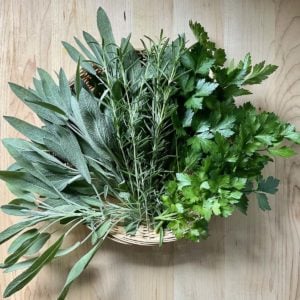
How to Freeze Fresh Herbs
WANT TO SAVE THIS RECIPE?
Ingredients
- 1 bunch sage fresh, washed and prepped
- 4 sprigs rosemary fresh, washed and prepped
- 6 stems parsley fresh, washed and prepped
- 18 tablespoons olive oil or water (optional)
Instructions
- Properly wash herbs and use a salad spinner to remove all moisture. Tea towels can also be used.
- Mince the herbs.
Option 1:
- Place minced herbs in a freezer-safe bag or airtight container. Transfer to freezer until ready to use.
Option 2:
- Measure a total of 1½ tablespoons of minced herbs into each section of an ice cube tray.
- Cover the herbs with 1½ tablespoon of cold water or olive oil.
- Place the tray in your freezer until the cubes are frozen solid.
- Pop-out the cubes, transfer them to a Ziploc plastic freezer bag and seal. Store in the freezer until you need them.
- For both options, there is no need to thaw before using.
Video
Notes
Nutrition
I originally published this post on October 5, 2021, and republished it on May 28, 2024, with updated content and a video. Thanks for sharing.



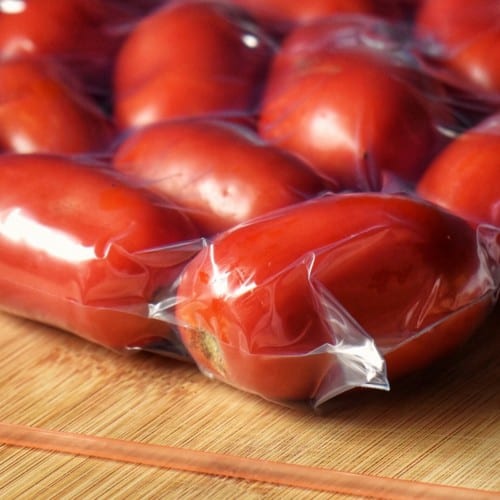
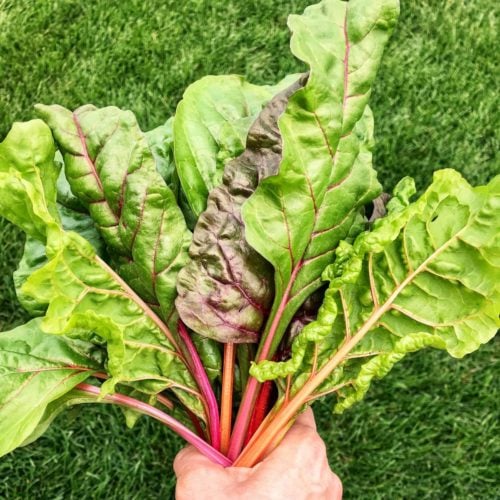
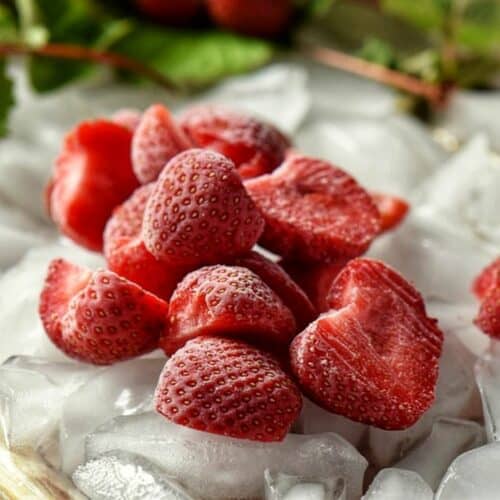
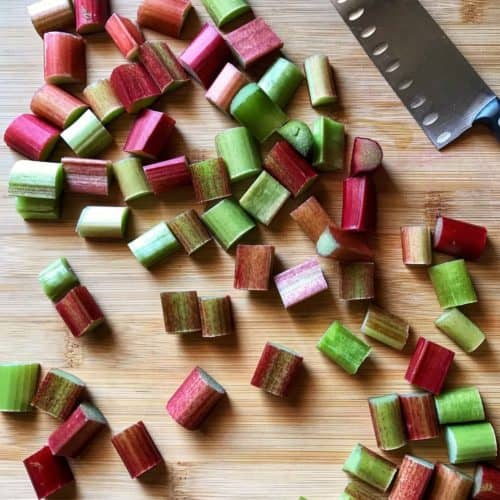
Camille
I also do this Method,it is gratifying knowing I am not throwing my money in the trash.
Maria
I totally agree Camille! Thanks for stopping by!
maria
i have done a few of your recipe and they are all good so far very happy to be on your sight,, thank you i like easy recipe not to complicate
Maria
My pleasure Maria! Thanks for your support!
Alicia
Thank you so much for sharing in such detail! I have been trying to decrease our food waste and looking for ways to preserve extras. I truly appreciate this!
Maria
My pleasure Alicia! This is also one of my goals ♥ Thanks so much for taking the time to comment!
Carol
I have been doing this for quite a few years now and have never heard of anybody else doing it! I am so glad to know that I am not alone in doing this method. I have seen where people have articles about freezing herbs in ice cube trays in water or in oil, but not juat washing them off and drying them REALLY WELL and then storing in freezer baggies in freezer. This method works so well and you can enjoy those great flavours in those cold winter months. It is so true that you just cannot compare the flavour from the spice aisle with what you can grow yourself! And it seems like some years some vegetables don’t do so good but you can almost always depend on a nice crop od dill or basil when you plant it.
Maria
Thanks so much for taking the time to comment Carol. It really is so convenient and economical!
bill marsano
Carol’s “drying them REALLY WELL”–a salad spinner should be perfect for this.
Maria
Yes! A salad spinner is perfect! Enjoy!
val
I’ve already made 2 batches! So convenient to have in the freezer!
Maria
I agree, it really is so convenient! Thanks Val!